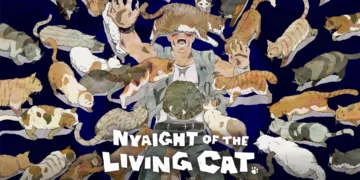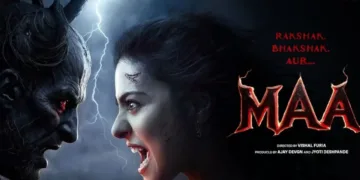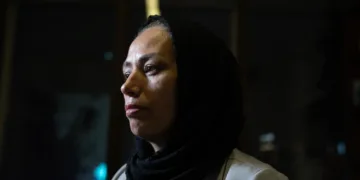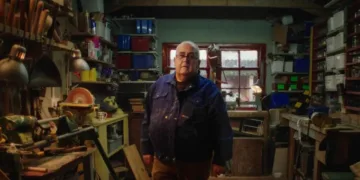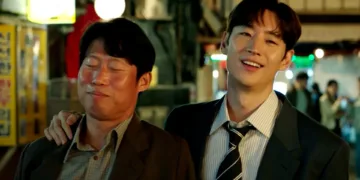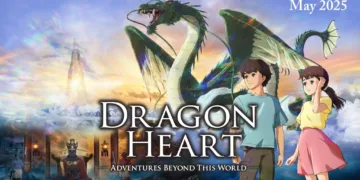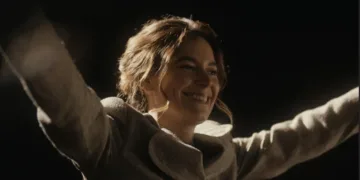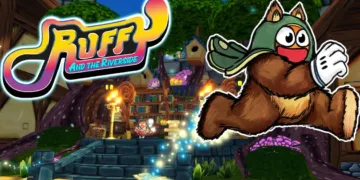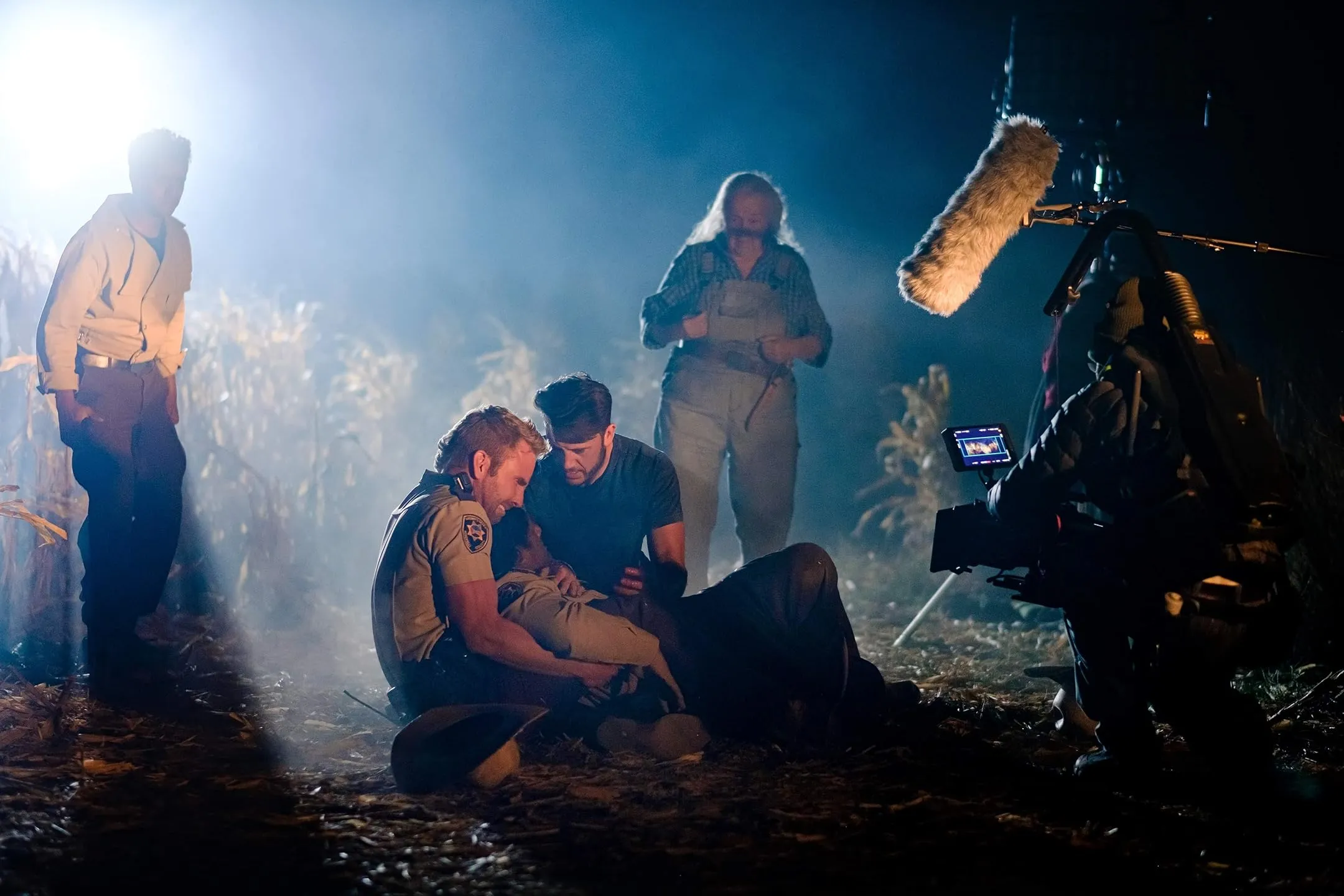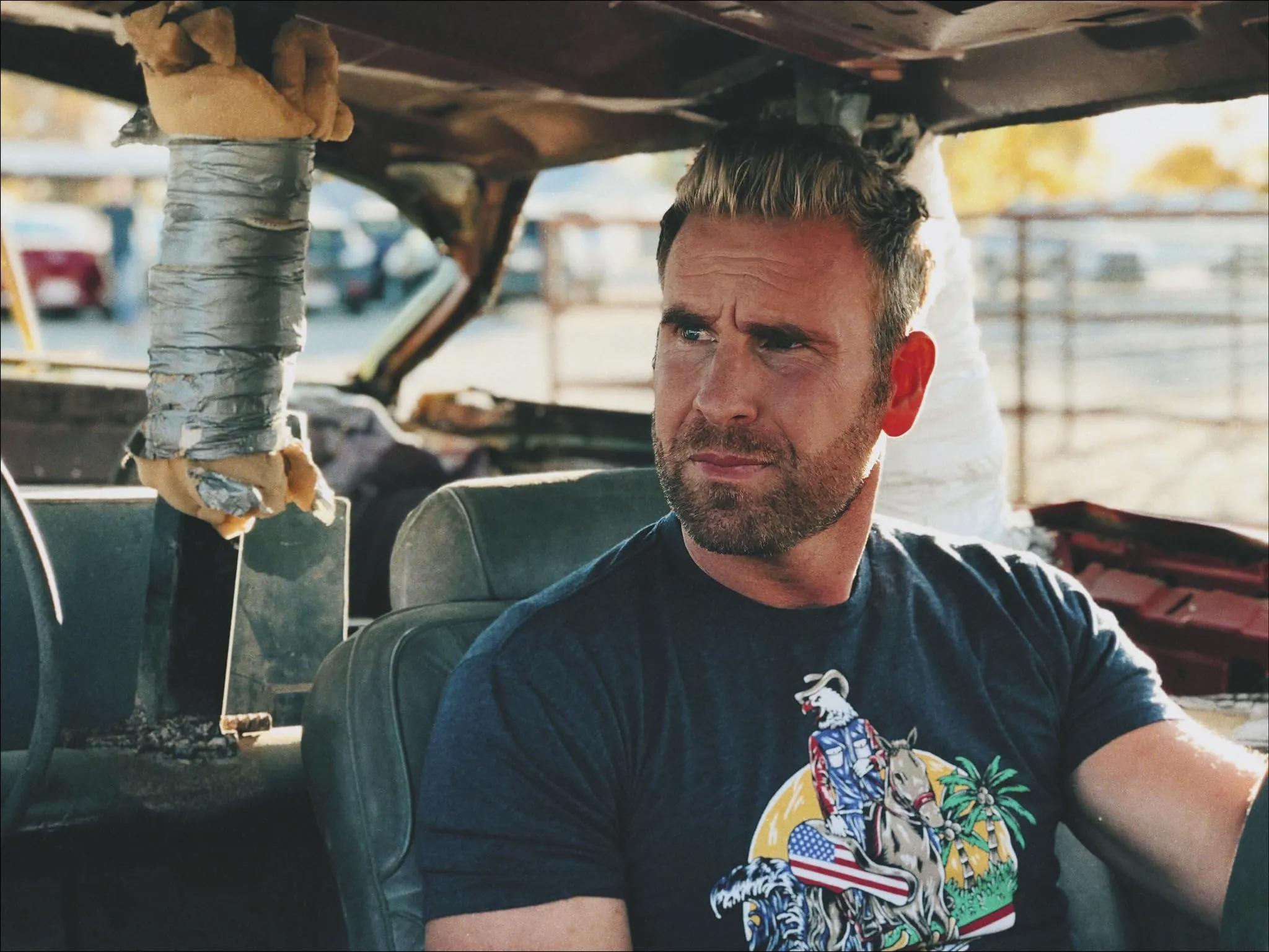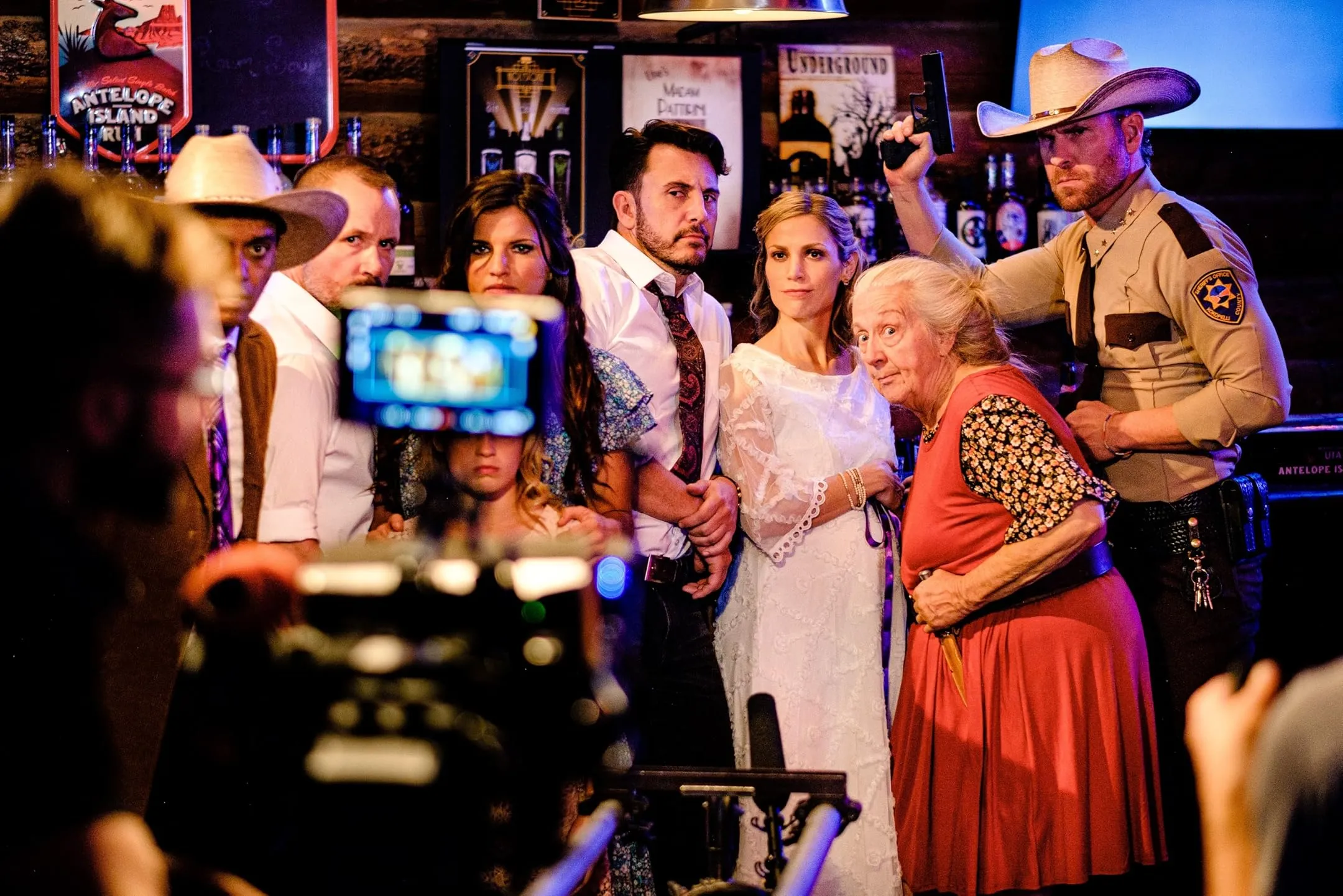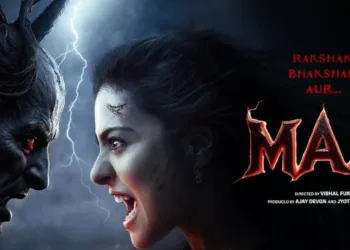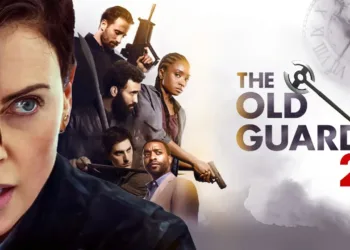Set in the dusty town of Blue River, Utah, Alien Country is a funny story about how small-town life and chaos from other worlds collide. We are introduced to Jimmy Walker (K.C. Clyde), a demolition derby driver, and Everly (Renny Grames), a singer-songwriter who just found out she’s pregnant. The film’s beating heart is this delicate balance between personal stakes and cosmic disaster.
The event that started it all—a portal accident that let bio-engineered alien creatures loose—is a metaphor for a split. The alien attack throws the town’s routine off, turning everyday problems into life-or-death ones. Jimmy and Everly’s struggles reflect bigger themes: the fear of the unknown and the search for identity in a world that is changing quickly as they confront their impending parenthood amidst chaos.
In this light, Alien Country becomes a commentary on our internal battles, encouraging viewers to find humor and resilience in the face of overwhelming odds.
Character Journeys: From the Personal to the Cosmic
The character growth in Alien Country is a microcosm of bigger problems in society, especially seen through the eyes of Jimmy Walker. As a demolition derby driver who likes to act without thinking, Jimmy is the perfect example of a flawed hero.
He is also haunted by the memory of his missing father, whose disappearance is steeped in local legend and alien plot (a classic case of parental absence leading to existential angst). Jimmy is driven by his desire to show himself as a partner and a possible parent because of his background. His transformation from a carefree thrill-seeker to a reluctant protector as the chaos develops is a powerful commentary on responsibility in the face of adversity.
On the other hand, the link to truth amidst the absurdity is Everly. Her goals as a singer-songwriter are at odds with the responsibilities of becoming a mother, creating a complex web of inner conflict. As we can relate to Everly’s story, she faces the tricky waters of personal ambition versus societal expectations. This is a nod to the age-old battle of women juggling work and family. As they both deal with their fears and desires amidst the alien invasion, Jimmy’s character arc is complemented by hers, and they eventually find strength in their collaboration.
The narrative is made richer by the supporting cast. Each part reflects community dynamics, from the crazy conspiracy theorist to the odd townsfolk banding together to fight the alien threat. They represent different societal archetypes, illustrating how collective action can come from chaos.
Their interactions bring to light the film’s main idea: that even in the face of the extraordinary, the bonds we make through our shared humanity help us confront the unknown. We are asked to think about both personal growth and the power of community in dealing with life’s unpredictable challenges through these characters in Alien Country.
Themes of Chaos and Connection: Parenthood and Community in Alien Country
Alien Country is mostly about navigating the rough waters of soon-to-be parenthood, a theme throughout the entire narrative. Jimmy and Everly’s journey is a good example of the worries that come with having a child amidst the chaos.
Their struggles—fears of not being good enough, the weight of expectations, and the difficulty of making a name for themselves as a couple—reflect a larger way that people talk about parental responsibility. The film contrasts the alien invasion with the protagonists’ inner turmoil, suggesting that parenthood can feel overwhelming and strange, much like alien threats.
The couple’s mental growth becomes a moving look at resilience as they consider their future. Their relationship grows despite the absurdity of fighting glowing aliens, highlighting how outside problems can spur personal change (think of it as a cosmic rite of passage). A narrative device that resonates greatly in current conversations about parenting in uncertain times is the alien invasion’s chaos, which serves as a crucible, strengthening their bond as they confront their fears.
The idea of community and cooperation is also highlighted by the film’s setting, which is a small town in America. In the face of the alien danger, Blue River’s residents go from being shown as oddballs to working together as a team.
This group response is a metaphor for community resilience because it is reminiscent of times in the past when societies came together to confront external challenges (like World War II or even local natural disasters). The townspeople’s friendship highlights the power of unity, suggesting that it is not just individual bravery but the strength of group action that wins.
Alien Country asks viewers to reflect on the nature of human connection, the difficulties of parenthood, and the value of community in the face of chaos as it navigates these themes. It says that our connections, whether family or community ties, become our best defenses against the unknown as the world around us becomes more uncertain in cosmic and terrestrial ways.
Visual Imagination: Cinematic Craft and Alien Aesthetics in Alien Country
Alien Country’s art style is like a colorful fabric, using light and color to strengthen the story. Careful attention to detail guides the cinematography, which changes the color palette from the sunny tones of Blue River to the otherworldly brightness of the alien attack.
This contrast isn’t just pretty; it also represents how chaos can creep into everyday life (think of it as a visual metaphor for the psychological dread beneath it all). A chiaroscuro effect that raises the emotional stakes and fills the viewer with warmth and fear is created by using light, especially during key points of stress.
The interaction of shadows and light in several scenes creates a sense of impending doom, reflecting the characters’ growing worries. Light and dark are used as metaphors for knowledge and ignorance, safety and danger, in this technique, which is reminiscent of old-school horror films. A clever nod to the chaos that permeates both their world and the heroes’ lives, the cinematography changes to a more frenetic style when the aliens show up, using quick cuts and wide-angle shots that evoke a sense of disorientation.
Now, let’s look at the alien design. These people from another world are so creative. The aliens in Alien Country are very different from the generic aliens of the past. They have a strange, almost grotesque beauty. Their design, which combines natural shapes with creepy details, evokes both fear and interest. This duality reflects the tensions within our own society: the attraction and fear of the “other.”
Even though the special effects are a bit campy at times (in the best way possible), they make the invasion seem real in the film’s silly tone. The aliens’ moves are smooth but startling, which reminds me of how unpredictable life is. This choice of design not only improves the narrative of the film but also encourages viewers to reflect on the nature of fear and how the unfamiliar can both scare and interest them.
In conclusion, Alien Country’s cinematography and special effects are impressive technical feats and essential to the film’s study of deeper themes. The film offers a satirical perspective on the challenges of life while encouraging us to confront our fears, both personal and collective.
The Jester’s Mask: Balancing Humor and Action in Alien Country
Alien Country skillfully walks the line between comedy and action, creating a unique tone landscape that is fun to watch and makes you think. The film uses humor not only to distract from the chaos but also to improve the narrative. This delicate balancing act allows for lighthearted times amidst the seriousness of an alien invasion.
For example, scenes where the people of the town try to protect their homes in silly ways, like using trash cans as weapons or having silly encounters with aliens, are meant to be funny and relieve the tension in the audience. This technique is reminiscent of old buddy cop movies, where humor breaks up the action and makes the stakes feel real and silly.
In a memorable scene, Jimmy tries to get the people of the town to support him by playing out a disastrous demolition derby, complete with over-the-top bravado and questionable ways to get people to work together. This scene not only makes people laugh but also shows how his character has grown and how close everyone in the community is, illustrating how humor can bring people together in tough times.
On the other hand, this funny surface hides a deeper emotional tone. Serious themes like fear and responsibility are explored through humor in Alien Country. The film does a great job of mixing fun parts with serious emotional ones, which lets the characters show how vulnerable they are in a crazy world.
For instance, Everly’s funny reflections on parenting in the face of alien chaos serve as a lighthearted diversion and a somber reflection on her problems. This duality makes viewers reflect on their own experiences, including how absurdity frequently accompanies our biggest challenges and how laughter and fear coexist.
Alien Country does this by making you think about the complexities of human experience while also providing entertainment. The film’s ability to blend humor and action makes it a fascinating study of the absurdities of life and the resilience of the human spirit.
Genre Mash-Up: Homage and Subversion in Alien Country
Alien Country skillfully navigates the world of genre movies, drawing comparisons to classics like Cowboys & Aliens and Tremors. Similar to Tremors, which combines small-town charm with monstrous threats, this film incorporates its alien chaos into the everyday rhythms of country life. The comedic elements turn fear into farce, helping to stress the absurdity of the situation.
In the same way, Cowboys & Aliens tries to combine Western and sci-fi themes, but Alien Country is more fun and often goes against the rules of the genre. We don’t have tough heroes charging into battle; instead, we have a group of odd-town folk whose lack of skill adds a layer of humor that challenges conventional ideas of heroism.
This change both respects and criticizes the genre’s past works, suggesting that maybe the most important fights we face are not against aliens but against ourselves and our communities.
Through these allusions, Alien Country makes a cultural comment on resilience and absurdity in the face of chaos, encouraging viewers to reflect on their own stories amidst the cosmic comedy.
The Indie Odyssey: Challenges and Commitment in Alien Country
The making of Alien Country is a perfect example of the typical journey of an independent filmmaker, full of challenges and successes. Filmmakers had to work with small budgets, crews, and other limited tools, but their passion brought life to every frame. Even amidst the restrictions, this commitment to authenticity shines through.
There were some problems along the way; tight plans and logistics problems often made it look like the project would not finish on time. However, the team’s determination turned these problems into chances to think of new ways to solve them.
This spirit hits home and reflects a larger narrative in independent film: that passion can turn even the smallest projects into something powerful and significant.
The Review
Alien Country
As it successfully navigates the complexities of parenthood, community, and the absurdities of life, Alien Country is a delightful mix of humor, heart, and sci-fi chaos. While the balance of comedic and serious themes encourages deeper reflection on societal problems, the film's vibrant cinematography and creative alien design elevate the narrative. Along with paying homage to genre classics, it bravely forges its path, making it a welcome addition to independent films.
PROS
- Engaging blend of comedy and action.
- Strong character development and emotional depth.
- Creative alien design and effective special effects.
- Thoughtful exploration of themes like parenthood and community.
CONS
- Occasional pacing issues in the second act.
- Some humor may not resonate with all audiences.






















